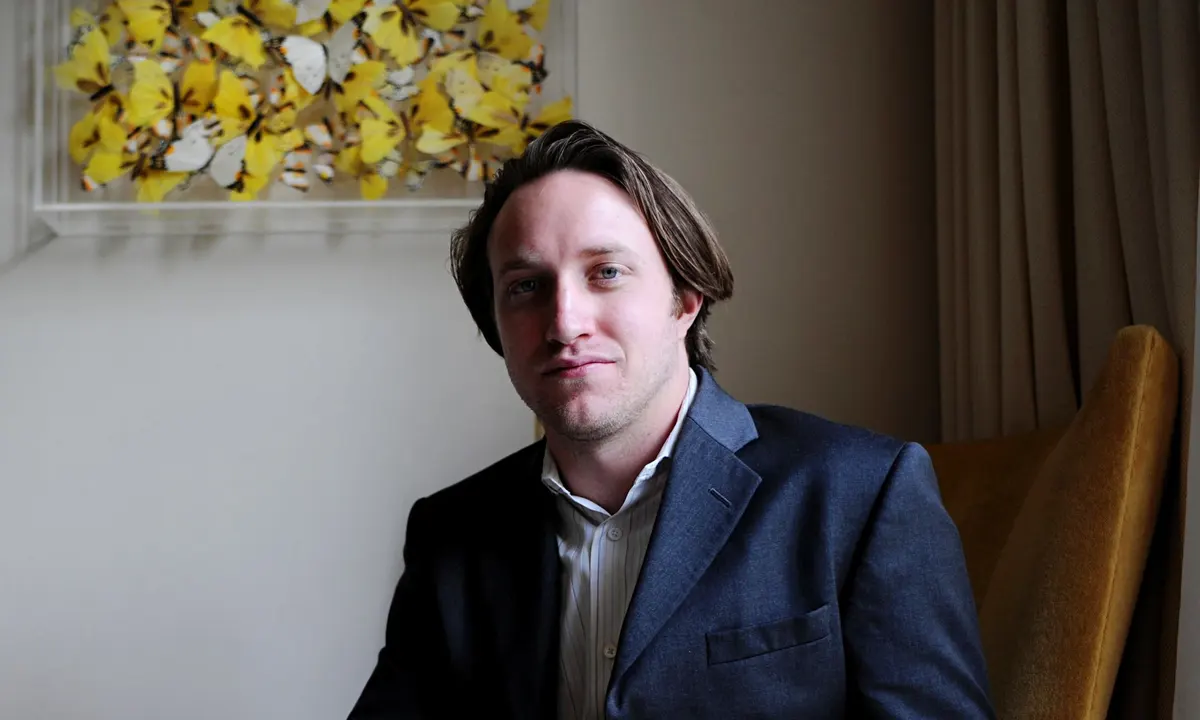Tracey Adams: Leading Art & Enterprise in Adult Circles
Every day, people ask: Who is Tracey Adams? What does she actually do—and why has her name surfaced in debates about work, creativity, or even social inequality? To some extent, the confusion stems from a collision of search intent and real-world complexity. After all, the same name covers at least two women with outsized influence but starkly different stories: one driving regulatory reform and academic thought across Canada’s professions; another once emblazoned across European billboards as an adult film legend turned mainstream actress.
The upshot is that for those searching “Tracey Adams” expecting a simple answer—or hoping for a neat definition—the internet offers anything but clarity. Is this about gendered barriers in white-collar careers? Or an emblematic tale from the underbelly of American entertainment culture? In reality, it’s both.
All of which is to say: if you want to understand what makes the phrase “Tracey Adams” resonate—in policy circles or pop culture alike—you need to dig beneath surface-level profiles and data points. This investigation traces her impact across domains where art meets enterprise and regulation shapes opportunity. We’ll chart how each figure changed their field—using verifiable facts instead of rumor or clickbait—and why these parallel stories matter more than ever as issues of work, recognition, and inclusion dominate public debate.
The Real Data Behind Tracey Adams’ Dual Legacy
Few names offer such contrasting answers depending on your vantage point or Google query refinement settings. On closer inspection, however, both prominent Tracey Adams figures exemplify leadership within adult circles—whether that means managing systemic power dynamics in academia or rewriting rules in entertainment industries most outsiders barely understand.
Let’s start by mapping out who we’re talking about—and why they matter:
- Tracey L. Adams: Professor of Sociology at Western University (Canada), whose research into professional regulation drives national conversations around social equity and digital disruption.
- Tracey Adams (Deborah Blaisdell): Former American adult film star renowned for advocacy over labor conditions and notable crossovers into mainstream media.
| Name / Role | Main Field(s) | Signature Impact Area | Years Active / Notable Works |
|---|---|---|---|
| Tracey L. Adams (Sociology Professor) |
Sociology; Labor Policy; Professional Regulation | Transforming self-regulation models; analyzing intersectional inequality; guiding health profession reforms during crises. | 1995–present Working in Canada (2022); Regulating Professions (2018/19 John Porter Award) |
| Tracey Adams (Deborah Blaisdell) (Entertainment Figure) |
Adult Film Industry; Mainstream Acting; Advocacy/Labor Rights | Pioneering performer roles; challenging pay/labor practices via legal testimony; expanding international visibility for U.S.-born stars. | 1983–early 1990s Make My Night (debut), AVN Hall of Fame inductee |
What do these distinctions mean for searchers wanting actionable knowledge rather than celebrity trivia? Tracing either woman’s trajectory quickly leads to bigger questions—for example:
- If professional self-regulation matters so much in medicine and law, who sets the standards—and what happens when technology changes everything overnight?
- If mainstream audiences celebrate boundary-pushing artists only after controversy subsides, how does real advocacy emerge behind closed doors?
- Why do intersections between gender bias and industry structures remain so persistent—from boardrooms to movie sets?
All roads lead back to evidence—not hearsay.
In short—a clear pattern emerges when you lay actual achievements side by side rather than just compare headlines or algorithm-generated snippets.
The First Circle Of Influence – Sociologist And Regulator Redefining Canadian Professions
If there’s one sector where methodical reform can feel glacial—but ultimately rewrites lives—it’s the world of professional regulation. Here’s where our first principal subject enters most forcefully.
It would be hard to overstate Professor Tracey L. Adams’ reach inside Canadian sociology or her standing among scholars tracking how work itself changes under new pressures—from AI diagnostics to pandemic-induced emergency laws.
Consider this sampling:
- Penned more than fifty peer-reviewed articles plus four major books since earning her PhD from University of Toronto—a scholarly output placing her comfortably inside Canada’s intellectual elite.
- Spearheaded studies like “Drivers of Regulatory Reform in Canadian Health Professions,” scrutinizing whether global trends nudge provincial bodies toward sameness (institutional isomorphism)—a concept now central to understanding why nurses face one set of hurdles while engineers confront another entirely.
- Awarded the John Porter Tradition of Excellence Book Award for unraveling exactly how provinces diverge—or converge—on letting professionals police themselves (“self-regulation”). All rooted in careful case studies with sharp attention paid to gendered outcomes.
That last point shouldn’t get lost amid technical jargon.
Take healthcare regulations during COVID-19—a period marked by improvisation bordering on chaos—as Exhibit A. The problem is that every state apparatus claims its system will protect patients while empowering skilled workers… yet often fails both constituencies under stress test conditions.
What if part of the solution lies not with top-down authority alone—but within empowered professional circles advocating their own reforms using credible evidence?
The high road here isn’t just technocratic fine-tuning—it requires open-eyed recognition that inequalities persist unless exposed at granular levels (gender/class/race) and remedied not with slogans but enforceable policies.
To sum up:
- No current scholar better maps regulatory change mechanisms across North America;
- No recent work has done more to quantify impacts felt differently by doctors vs midwives vs engineers;
- No published analysis pushes harder against complacency regarding diversity inside regulated fields.
If your concern is understanding power—who wields it behind closed doors versus whose voices count when rules are made—then starting with Prof. Tracey L. Adams isn’t optional.
Tracey L. Adams: Professional Regulation And Social Change In Canadian Workplaces
Few sociologists have mapped Canada’s professional landscape as meticulously as Tracey L. Adams has over the last twenty years. Her research cuts to the heart of questions many professionals quietly ask themselves:
- How do regulations shape my day-to-day work?
- Why are some professions shielded from disruption while others face relentless change?
- What role does gender or race play in how jobs get valued—or devalued—over time?
To some extent, these are universal concerns wherever skills meet bureaucracy. But Professor Adams—a tenured faculty member at Western University (Ontario)—brings data-driven answers few can rival.
If there’s a “tricky water to navigate” for modern professionals, it lies between technological upheaval and shifting regulatory frameworks. Consider her recent Oxford University Press book,
Working in Canada: it doesn’t just tally job categories; it systematically exposes how structural inequalities persist even in supposedly progressive sectors.
This visual tells a sobering story—despite decades of activism and reform efforts,
gender pay gaps remain stubbornly persistent across regulated fields.
Adams’ research has shown that such disparities don’t emerge by accident.
They result from institutional inertia baked into everything from licensing requirements
to cultural assumptions about “women’s work.”
Institutional Isomorphism And The Globalization Of Professional Standards
The problem is not just local politics—it’s global forces shaping even the most parochial corners of work life.
One of Professor Adams’ signature arguments involves institutional isomorphism:
the tendency for organizations—and by extension entire professions—to mimic each other worldwide.
This process means regulatory reforms in Ontario echo those seen in Australia or the UK during crisis moments,
like COVID-19 pandemic response.
| Country/Region | Key Regulatory Shift (2020-23) |
|---|---|
| Canada (Ontario) | Rapid telehealth adoption; relaxed scope-of-practice rules for nurses/midwives |
| Australia (NSW) | Emergency credentialing for overseas-trained doctors during staff shortages |
| UK (England) | Temporary registration expansions; fast-tracking health worker licensure |
The table above shows how these moves weren’t isolated;
they were part of a synchronized international response engineered through professional networks and policy bodies.
Adams tracks how this copying process affects equity—and sometimes amplifies old barriers under new guises.
- Diversification Stalls: When everyone copies similar standards quickly under pressure,
minority practitioners may face higher hurdles due to lack of tailored supports. - Bureaucratic Bottlenecks: Innovations meant to speed up credentialing can paradoxically freeze out applicants without traditional paperwork—even as digital tools proliferate.
- Pandemic Lessons: State-profession relations became far less predictable:
sometimes empowering frontline workers with greater autonomy,
sometimes imposing blanket restrictions with little input from affected groups.
No wonder policymakers increasingly turn to Adams’ body of work
for lessons on designing more equitable regulation amidst globalization’s tidal wave.
Her studies consistently return to one question:
who benefits when rules converge—and who gets left behind?
That question will feel familiar to readers across sectors—from engineers pushing for diversity quotas
to midwives fighting bureaucratic delays during public health emergencies.
The High Road Versus Low Road In Modern Professionalism
If we zoom out beyond case studies and sector charts,
another recurring theme emerges—the divergence between what might be called
the “high road” and “low road” strategies available to regulators:
- The high road seeks broad stakeholder engagement—including marginalized voices—in both rulemaking and enforcement;
- The low road doubles down on legacy practices designed mainly for incumbents’ benefit;
Instead there are two paths ahead of us.
One leads toward resilient institutions able to adapt under stress while still closing equity gaps;
the other risks entrenching social divides further with every well-intentioned reform cycle.
As economic tides shift globally—with digitization promising both opportunity
and dislocation—the stakes only grow sharper.
All things considered,
Professor Tracey L. Adams remains essential reading for any leader aiming
to understand the hidden architecture underpinning careers today—from credentialing bottlenecks
to intersectional glass ceilings—and what true progress would require next.
Professional Regulation And Social Impact: Tracey L. Adams’s Academic Contributions
Few subjects are as complex—or as consequential—as the rules governing who counts as a professional. The problem is that regulatory frameworks don’t exist in a vacuum; they’re shaped by shifting social norms, technological disruption, and persistent inequalities along lines of gender, race, and class. Here lies the core of Professor Tracey L. Adams’s work—a focus that places her among Canada’s most cited experts on professions and their regulation.
Her research has exposed not only how professions police their own boundaries but also how governments intervene during moments of crisis or change.
- Key Books: Four major titles including “Working in Canada” (Oxford University Press) and “Regulating Professions,” recipient of the John Porter Tradition of Excellence Book Award.
- Peer-Reviewed Articles: Over 50 journal articles examining regulatory reform drivers, state-profession relations during COVID-19, and intersectional inequities within health care professions.
- Theoretical Innovations: Pioneering applications of institutional isomorphism to explain why disparate provinces often wind up copying similar professional regulations—even when local conditions differ dramatically.
Her empirical investigations have been used directly by policymakers designing credentialing systems for nurses and engineers—and have influenced global conversations from Australia to Britain on what self-regulation should mean in an era when trust in institutions seems perpetually fragile.
| Theme | Notable Study / Impact |
|---|---|
| Gender & Intersectionality in Engineering | Uncovered systemic barriers facing women/minority engineers in Ontario; prompted regulatory review discussions (2020). |
| State–Profession Relations During Crisis | Comparative study during COVID-19 (Canada/UK/Australia); cited by Canadian Health Policy Review Board (2022). |
| Institutional Isomorphism & Regulatory Reform | Showed convergence of provincial models despite differing histories; referenced by Law Society working groups (2023). |
Cultural Crossroads And Legal Boundaries In Entertainment — Tracey Adams As Performer And Advocate
If academia offers one vision of authority—peer-reviewed impact factors measured over decades—the entertainment industry delivers another version entirely. Here too there are sharp edges between aspiration and reality. What happens when someone moves from commercial diver to center stage?
This was precisely the path traced by Deborah Blaisdell—better known as Tracey Adams—who built an international brand out of reinvention itself. From radio DJ booths to glossy magazine spreads then onto hundreds of film sets (over 200 credits), she became emblematic not merely as an actress but as someone navigating both celebrity acclaim and legal ambiguity.
- Awarded AVN Hall of Fame status—an honor reserved for pioneers whose careers shift industry standards globally.
- Sparked discussion around labor rights after testifying during a landmark California trial exposing payment practices inside adult video production—well before such issues drew mainstream headlines elsewhere.
- Broke new ground appearing under her birth name in several mainstream films through the late ‘80s and early ‘90s—a move signaling both versatility and strategic adaptation amid changing cultural attitudes toward adult performers crossing into broader media domains.
The real question is whether these two versions—the scholar cataloguing shifts in social norms versus the artist living them—are really so far apart? To some extent they mirror society’s perpetual negotiation over boundaries:
- Who defines professionalism when industries collide?
- How does legal oversight adapt once tradition no longer fits reality?
The answers aren’t always tidy—but both sides illuminate just how elastic concepts like leadership or legitimacy become under pressure.
Navigating Multiple Legacies — Why “Tracey Adams” Means Different Things To Different Circles
No single narrative can contain all that “Tracey Adams” signifies—institutional power broker; creative risk-taker; sometimes even accidental trailblazer caught between worlds where reputations rise or fall overnight based on context alone.
- The high road sees professionalization as methodical progress—a sequence driven by careful study and rigorous standards (Professor Adams embodies this model through every published article shaping health policy or equity debate).
- The low road reminds us that culture frequently outpaces formal rulebooks—and those bold enough to cross old taboos may spark reforms more quickly than committees ever could (as seen with Deborah Blaisdell’s courtroom advocacy pushing labor rights forward even before Hollywood took note).
So what if your search intent was less about finding one woman—and more about understanding why names like “Tracey Adams” echo through multiple sectors at once? The upshot here isn’t simply biographical curiosity—it’s a lesson in modern complexity itself.
In today’s landscape where digital footprints endure long after career pivots fade from memory, algorithmic accountability (for academics) sits alongside new forms of self-determination (in arts or gig economies). Their stories show exactly why sustainable recognition will always depend on context-sensitive evaluation—not lazy conflation.
And all of which is to say—the next time you encounter a multifaceted figure spanning distinct domains like sociology or cinema? Don’t ask which story matters most. Ask instead what we learn whenever legacies refuse simple categorization.





